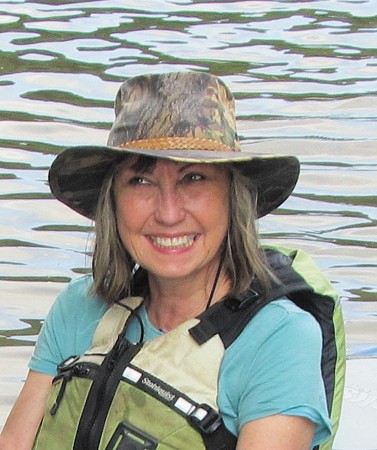My two sons spent formative summers working in national parks.
Our adventures in these spectacular landscapes provide memories that I hold particularly dear: paddling through Hance Rapid on the Colorado in Grand Canyon, meeting our Appalachian Trail thru-hiker in Shenandoah, sitting beside the Merced River in Yosemite with night approaching the granite face of Half Dome, catching a glimpse of wolves in Yellowstone, tubing the Virgin River in Zion and exploring the cliff dwellings in Mesa Verde.
The invention of the national park system, said author Wallace Stegner, was America’s best idea: “absolutely American, absolutely democratic, they reflect us at our best rather than our worst.”
In his six-part documentary, “The National Parks,” filmmaker Ken Burns told the story of this big idea, noting that we take for granted this unique American thing called national parks, just as we take for granted the air we breathe and the water we drink. “Great sections of our natural landscape set aside not for kings or the very rich,” wrote Burns, “but for everyone, for all time.”
For the past century, people have shared experiences with family, friends and strangers in the more than 400 park units (totaling 84 million acres) that make up the national park system: passing on a love of land and place to the next generation.
On August 25, 2016, the National Park Service – the federal agency charged with managing and protecting park units throughout the United States – will turn 100. A centennial celebration has already kicked off a second century of stewardship of America’s national parks with a focus on engaging people through recreation, conservation and historic preservation.
Georgia is blessed with 10 national park units: three historic sites, three monuments, one recreation area, one seashore, one battlefield park and one military park.
In 2012, about 5.8 million people visited the three national parks in metro Atlanta: Chattahoochee River National Recreation Area (NRA), Kennesaw Mountain National Battlefield Park and Martin Luther King Jr. National Historic Site.
Ranking in the top 30 most-visited national parks in the country, the Chattahoochee River NRA annually offers recreation to 3.2 million people. With 6,500 acres, it also provides two-thirds of all the protected green space in metro Atlanta.
America’s “best idea” should never be taken for granted, nor should it be overlooked that our parks must have adequate funding to operate, maintain and protect these national treasures. Park friends groups, such as the Chattahoochee Parks Conservancy, help build a community of support by raising funds and public awareness and providing volunteers for needed projects.
One hundred years ago, the great conservationist Teddy Roosevelt could imagine all of us when he protected millions of acres for future generations. While we enjoy the fruits of his vision, we must do all we can to ensure that these places will continue to provide inspiration and connections for the next century.
During this year of centennial celebration, I hope that you’ll visit as many national park units as possible, here in Atlanta and throughout the country.
For more information about Atlanta’s national parks, visit nps.gov/chat, nps.gov/kemo and nps.gov/malu. To learn about Chattahoochee Parks Conservancy and get involved, visit chattahoocheeparksconservancy.org.


The National Park Service is certainly not “America’s best idea”. It has a 100 year history of arrogantly contradicting the real best idea: a country founded on the rights of the individual, and in particular protecting the right of private property.
The National Park Service, given spectacular areas (and some turkeys) to manage, has always been an elitist, arrogant agency with an expansionist mission mentality. It has a long and brutal record of corruption and seizing private property through eminent domain.
The Duncan/Burns “documentary” produced to promote NPS barely mentions the condemnations, admitting it only at the Smoky Mountains — where thousands of people were forcibly removed, leaving people in the region bitter to this day. The “documentary” showed no remorse and no conscience and neither did the Smoky Mountains 75 anniversary celebration.
You mentioned Shandandoah: Read the recent book Shenandoah: A Story of Conservation and Betrayal by Sue Eisenfeld. Thousands were forcibly removed there too in a typical NPS story of elitist insiders arranging to steamroll people deemed not to matter — in the name of “the people”.
The ugly National Park Service politics has been repeated over and over, with an especially bad binge in the 1970s. Watch the PBS Frontlines documentary For the Good of All at http://www.landrights.org/VideoGoodOfAll.htm Ken Burns says he wants to double the size of the National Park System, and so does the NPS lobby.
NPS is a government agency, not God, but we are not supposed to question its treatment of the people in its way. Federal “protection” of land politically decreed to be “nationally significant” manufactures a false perception that the civil rights of people targeted for sacrifice don’t matter.
They don’t even want it talked about because they know that normal people revolt in horror when they find out. It’s a variety of nationalistic, collectivist state worship and propaganda in the name of the “people” that has never been the world’s “best idea”.
NPS and its lobby get away with it by hiding behind the scenery with a national mythology and a PR machine that emotionally manipulates us with quasi-poetic rhetoric and scenic imagery. Normal people appreciate scenery without going on a binge of government abuse, but not the Big Park apologists for NPS.
This century old civil rights travesty should not be celebrated by ignoring it in the usual gushing over NPS. The skeletons in the closet are a mass grave.